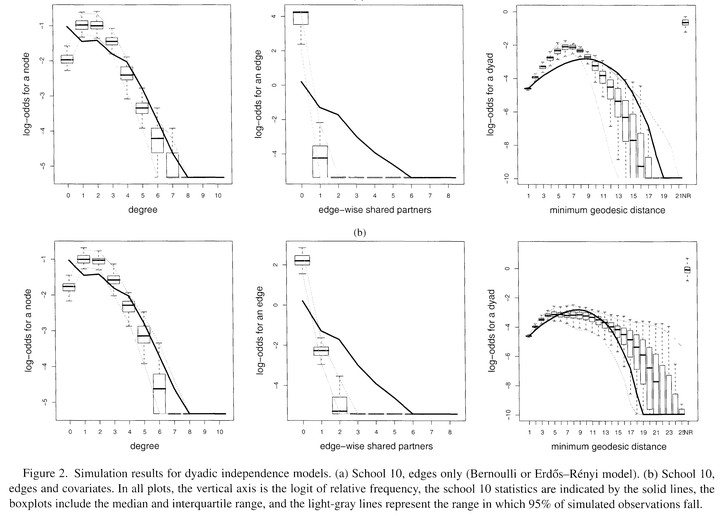
Abstract
We present a systematic examination of a real network data set using maximum likelihood estimation for exponential random graph models as well as new procedures to evaluate how well the models fit the observed networks. These procedures compare structural statistics of the observed network with the corresponding statistics on networks simulated from the fitted model. We apply this approach to the study of friendship relations among high school students from the National Longitudinal Study of Adolescent Health (AddHealth). We focus primarily on one particular network of 205 nodes, although we also demonstrate that this method may be applied to the largest network in the AddHealth study, with 2,209 nodes. We argue that several well-studied models in the networks literature do not fit these data well and demonstrate that the fit improves dramatically when the models include the recently developed geometrically weighted edgewise shared partner, geometrically weighted dyadic shared partner, and geometrically weighted degree network statistics. We conclude that these models capture aspects of the social structure of adolescent friendship relations not represented by previous models.